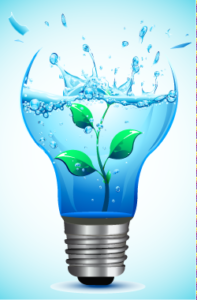 California recently experienced its wettest winter in 122 years, a stark contrast to last year, when 95 percent of the state was plagued by drought. According to the U.S. Drought Monitor, the abundance of rainfall has now eliminated extreme drought and provided relief from the five-year bout of water scarcity.
California recently experienced its wettest winter in 122 years, a stark contrast to last year, when 95 percent of the state was plagued by drought. According to the U.S. Drought Monitor, the abundance of rainfall has now eliminated extreme drought and provided relief from the five-year bout of water scarcity.
Now that the immediate pressure is off, is it back to business-as-usual for California water utilities?
Clearly, the answer is no. As global climate change continues to affect weather patterns, California will see more frequent and dramatic shifts between drought and deluge. Utilities largely depend on selling a high volume of water to recover their cost of operations. Under California’s mandated conservation for the past two years, they have struggled financially.
Utilities need to adapt to this changing climate – both environmental and fiscal – to protect access to clean water. And increasingly, they are on their own in doing so: there’s no federal cavalry coming over the hill. Fortunately, the tools that the water utility sector needs to maximize operational and fiscal efficiency are now available and easily accessible. One approach is finding lost and hidden revenue in existing operations, taking advantage of the current economic conditions, such as low interest rates and high demand for yield-bearing investments, and adopting proven new technologies – all with the goal of meeting the existing and future needs of their customers.
For example, most water utilities operate archaic metering and billing processes that are both cost-intensive and data poor, resulting in significant lost revenue. Managing these business processes costs Californian water utilities $1.7 billion per year. Modernizing this vertical for the utility through new software-as-a-service solutions and advanced metering hardware can liberate approximately $300-600 million a year that can be used for infrastructure investments.
Advanced metering infrastructure (AMI) is another way to ensure the survivability of both revenue and resources. A typical water utility collects customers’ meter data on a monthly basis. With no reliable real-time performance data available, water and revenue often leak away. AMI, paired with sophisticated meter data management software, can help utilities protect vital revenue by identifying faulty meters in near real-time, before they become major headaches, while identifying real water leakage and waste.
The issue of aging infrastructure is not unique to California. The American Society for Civil Engineers recently gave United States infrastructure a grade of D+ (note, this includes all infrastructure, not just water utilities). According to the American Water Works Association (AWWA), it will take an investment of one trillion dollars to modernize our nation’s water infrastructure over the next 25 years. This investment is not coming. While the current administration in Washington has proposed a $1 trillion infrastructure fund to support investment in all infrastructure, only a small portion will be dedicated to the water sector. If approved, the proposed financing would triple the $0.8 billion currently allocated to the Drinking Water State Revolving Fund (DWSRF) and dedicate $2.5 billion to our national water infrastructure each year. And Congress’s most recent legislation, the Water Infrastructure Finance and Innovation Act, which aims to make water projects more financeable, only supplements the DWSRF with one billion dollars. We are a few zeros off.
Ultimately, water utilities in California and across the country need to take control; it is no longer possible to depend on government support – or on passing costs along to customers. While we cannot predict the future, we can be fairly certain that we won’t eliminate a changing climate and failing infrastructure from the conversation any time soon. As water utilities across the country start to act against future uncertainty, it is essential that they take advantage of all tools in their arsenal, like advanced software solutions, to protect our clean water future.